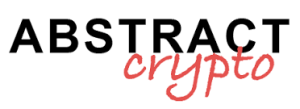Starting from March 31, 2025, Binance will delist all stablecoins not compliant with the MiCA regulation for users in the European Economic Area (EEA). This change follows the new directives of the European Union and will involve assets like USDT, FDUSD, TUSD, USDP, DAI, AEUR, UST, USTC, and PAXG. MiCA-compliant stablecoins, such as USDC and EURI, and fiat pairs (EUR) will remain available.
Details of the delisting of Binance of the stablecoins not compliant with MiCA
Binance has decided to comply with MiCA regulations, which aim to regulate the cryptocurrency market in Europe. From March 31, 2025, users in the EEA will no longer be able to trade non-compliant stablecoin pairs on the platform.
Impacts on Spot and Margin Trading
- Trading Spot: The non-compliant stablecoin pairs will be completely delisted. The pending orders will be canceled within 48 hours after the end of trading.
- Margin Trading: From March 27, 2025, non-compliant margin trading pairs will be delisted. Binance will automatically convert non-compliant assets and liabilities into USDC.
Promotions and alternatives for Binance users
To facilitate the transition, Binance offers various promotions for EEA users:
- Zero Fee Promotion for trading pairs USDC.
- Taker Fee Promotion for trading USDC.
- Opportunity to win a share of 1,000,000 USDC.
This move by Binance reflects the growing importance of regolamentazioni in the cryptocurrency market. With the implementation of MiCA, the EU aims to create a safer and more transparent environment for cryptocurrencies. USDC and EURI, being compliant, could see an increase in adoption among EEA users.
Conclusion
The decision by Binance to delist non-compliant stablecoins represents a significant step towards regulatory harmonization in Europe. Users should consider the conversion options and available promotions to adapt to the new regulatory context. This transition could significantly influence the cryptocurrency landscape, encouraging other exchanges to follow the example of Binance.
How will this change influence the future of stablecoins in the European market?


